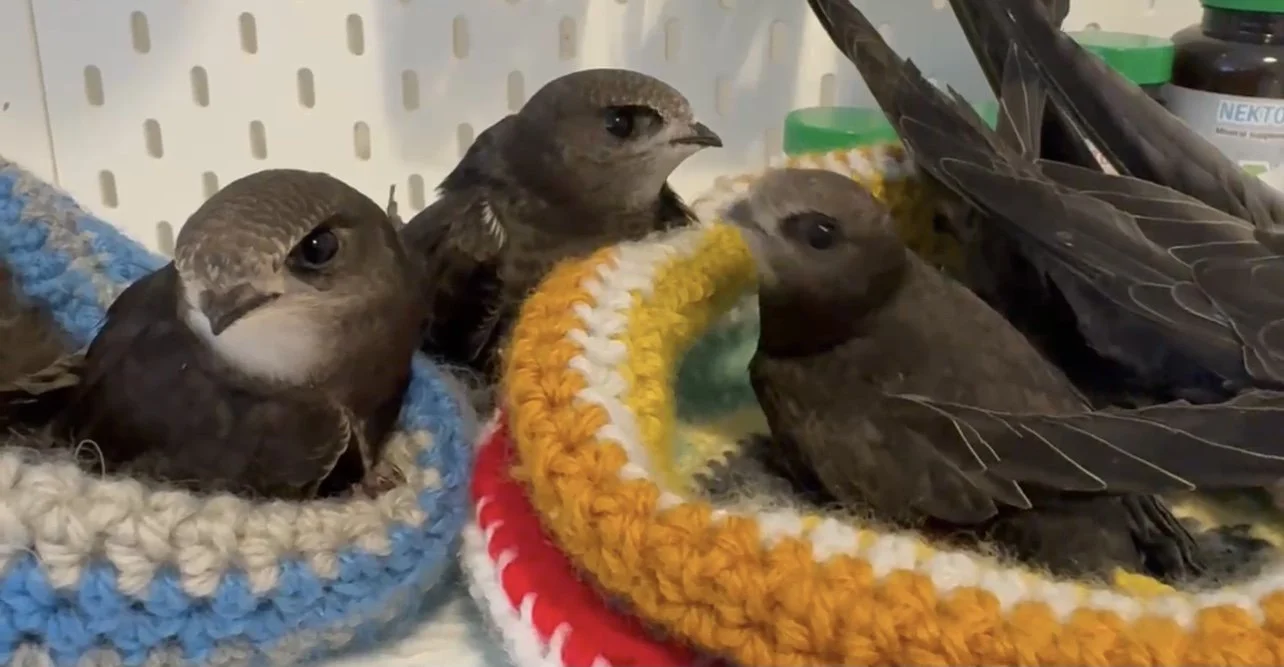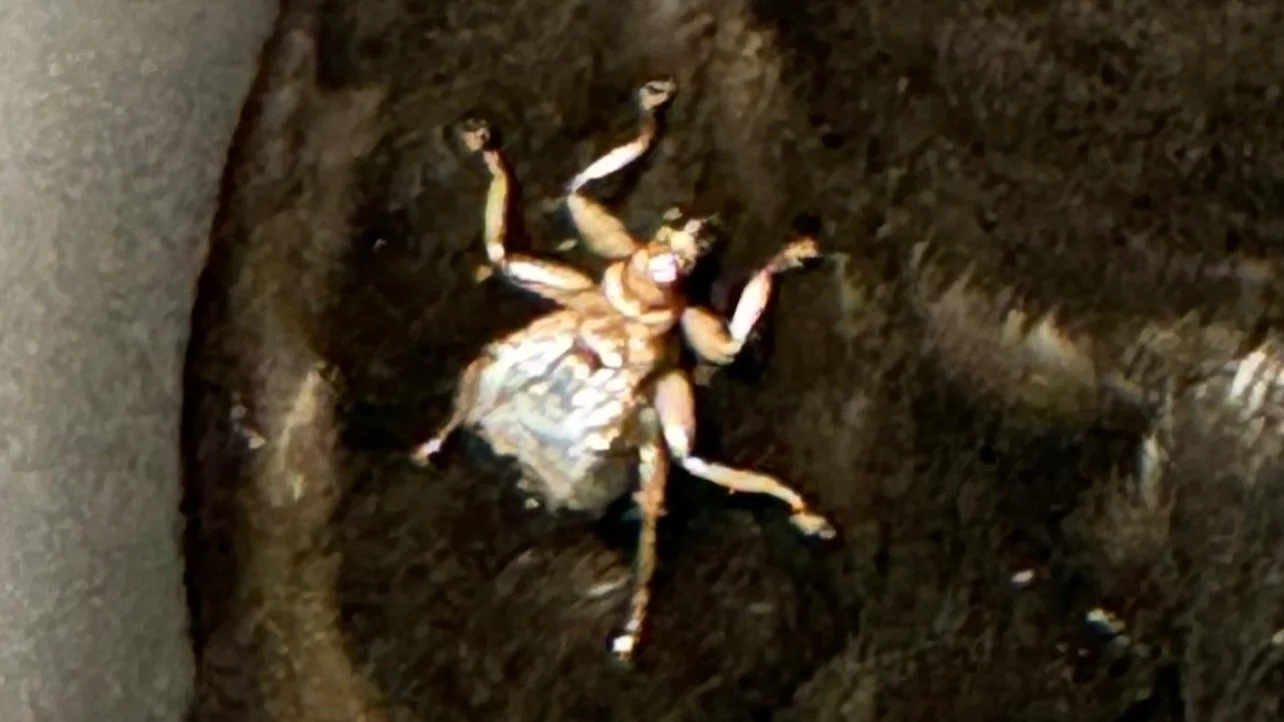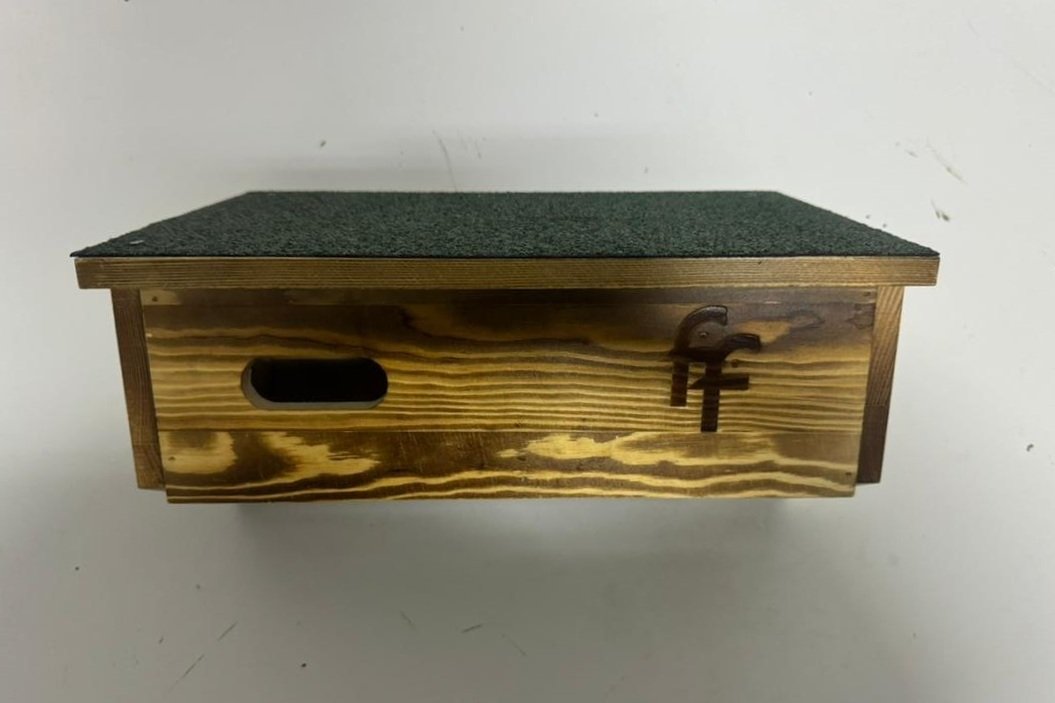We’ve Stirred Up a Hornets Nest!
Rescued Swifts at GABO Wildlife
No strangers to controversy, we have stirred up a hornets nest, or perhaps more accurately a flies nest!
Finches Friend was founded to battle wild bird disease in our gardens. In some respects we have spread ourselves too thin. We still have work to complete in feeding (principally our interception system), and have then diverted to nest boxes, simply because we see the need.
I am part of my local Swift rescue group, entirely volunteers, the group formed around an incredible lady called Carly Ahlen (GABO wildlife). Carly is an expert rehabber of red listed birds. My job is humble, to jump in the car (usually when Spurs are on TV) drive to a random address and collect a shoe box containing a grounded Swift or House Martin. I then drive to a pre agreed location 30 or 40 miles on, hand the box on to another volunteer and disappear home.
It can be compared to county lines for birds. I have sometimes wondered if the drug squad will one day appear and cuff us before expectantly opening the box and looking at each other nonplussed. We will be carefully raised to our feet, dusted down the gravel brushed from our cheeks then sent on our way, but I digress.
The helpless birds in the boxes could have arrived to find their nests occupied, in this situation they simply fly around or battle the incumbent until exhausted. Some fly into windows, some are attacked by cats, some are getting on in years and are tired of the parasite load they carry. Sometimes we collect chicks. Last year, a nest with live chicks was thrown by builders into a skip. Often we have successful outcomes, it is genuinely thrilling to see a rehabbed Swift returned to the air. Swifts have an amazing directional sense. A bird rescued in Margate, released three weeks later in a west Kent woodland clearing will soon find its way back to the place it was born. Rehabbing red listed birds is highly skilled 24/7 work.
It is through this group that I learned about the problems Swifts face, and how I could help to alleviate some of them. Keeping me on the straight and narrow is my son Andrew, we did our usual chatting thing, he commented things like “but you haven’t done this or that”. I say you are right Son, I will think again, then get on with it anyway.
Swift Louse Fly on a rescued Swift
Carly will always remove Swift Louse Flies from grounded Swifts. These are blood sucking parasites, about the size of a house fly and live permanently on their host, save leaving their pupae, more on that later. I discovered that the pupae over winter in the nest, and that they are clearly visible.
A Swift spends its entire life less nesting, in the air. Evolution has provided it with legs that suit its lifestyle. They are strong with sharp claws, useful for clinging crawling and fighting, but really only enable crawling on the ground. As a result, Swifts nest high, and need a clear flight path to the nest. Access to the nest from a human perspective is far from easy.
I started to discuss the concept of an accessible, easy to check and if need be clean Swift box with the group. As we chatted, the benefits become obvious, we can deploy the box mid-April as the Swifts begin to arrive and long after competitor species have chosen their nesting places. We can avoid wasp nests, we can remove string. We can remove any chicks that did not fledge. During this period, a report was released that showed Swifts were using up to 60% plastics for nest material. Swifts have to “catch” their nest materials in the air, sadly that is what is blowing around. Finally we can break the cycle of Swift louse fly by removing the pupae.
Early in the process, Carly introduced me to Edward Mayer of Swift Conservation. Edward has been hugely influential in highlighting the plight of Swifts, and in galvanising efforts to help them. As I write, we have not met, however I cannot emphasise more, how important Edward has been to our project. Edward is clear and very much to the point. That works for me, we have something in common, passion for our cause! Thank you Edward, I look forward to meeting you in June!
Drain rod removing Cleaner Swift Box at height
From an engineering perspective, the solution was straight forward, an automated locking system, and an attachment anyone can access. The lock came from my vehicle engineering back ground, and anyone can get access to a drain rod. The product was quickly developed and proved. We are delighted with the outcome.
When we publicised the concept the issue of the louse fly became a hot topic. Was the relationship symbiotic, the Louse Fly is an ancient creature in its own right, the Swift Louse Fly lives exclusively with the Common Swift, are we playing God?
Those who know us will appreciate that we are engineers but big on science, we like to do the right thing. This is a genuine dilemma.
The Swift Louse Fly life cycle works like this. The Louse fly actually can’t fly, it can run, very fast. There is no doubt that a healthy Swift can carry a Louse Fly burden and still survive perfectly well. A single Louse Fly takes 25mg of the Swifts blood every five days. A bad infestation can be 20. Common is five or six. It is common sense in my view that this is a one way street, the relationship is parasitism, and not symbiotic, there is no benefit to the Swift. The Louse Fly is armoured, the Swift is incapable of consuming the fly, and does not attempt to remove them (as far as we know). The Louse fly Pupae remains in the nest over winter, the act of egg laying by a swift, activates the pupae and they emerge to infest the chicks in their first days of life. It occurs to me that the weakest chick already has enough problems competing for food, to have a blood sucking parasite weakening it at the same time!
Cleaner Swift Box
There are good reasons that Swifts are red listed. Much of the issue relates to modern building techniques, and modifications or demolition of our older buildings. Swifts make around a 9,000 mile round trip each year to nest in exactly the same place. Last year we had an example of a scaffolder building a Scaffold on the face of a building, cutting off Swifts from their young. The scaffolder completely unprepared to assist when the issue was highlighted.
Beyond that we have hugely depleted our insect populations and changed weather patterns. So Swifts have ever longer odds stacked against them.
Cleaner Swift Box interior
Cleaner Swift Box gives its users an opportunity to manage some of the Swifts problems. Simply ensuring that a clear clean nest awaits the Swift at the end of its journey is huge. From a human perspective, if one sets out to help Swifts by providing a Swift specific nesting solution which is then occupied by a competitor species, the disappointment will be intense, especially if the box is replacing an existing nesting site lost through building modification for example.
Ultimately Cleaner Swift Box will offer a choice to its owners that no other product does. The owner will be able to choose whether it’s young Swifts fledge with or without Swift Louse Flies attached. For me, my Swifts will be free of the parasite. In my view it is not playing God, it is simply rebalancing a little of the human activity that has so plagued this natural wonder. Particular issues beyond those I have outlined influence me. I have read that a Swift nest can be abandoned when the parasite population becomes too great, but more importantly an anecdote from Carly. She explains “During rehabilitation, Swifts are calm and appear happy in their rehab community. When a Swift louse fly is removed and runs around, the birds go into open panic” it makes me believe that the arrangement is in no way a partnership, the Swift is a victim.
Ultimately Cleaner Swift Box enables management. For someone who cares enough to deploy a Swift Box it will increase the likelihood of occupation, it enables the user to know that they have provided the best possible environment for Swifts, and it gives the user a choice as to whether the next generation carries Swift Louse Fly or not. At scale, that could make a real difference.





